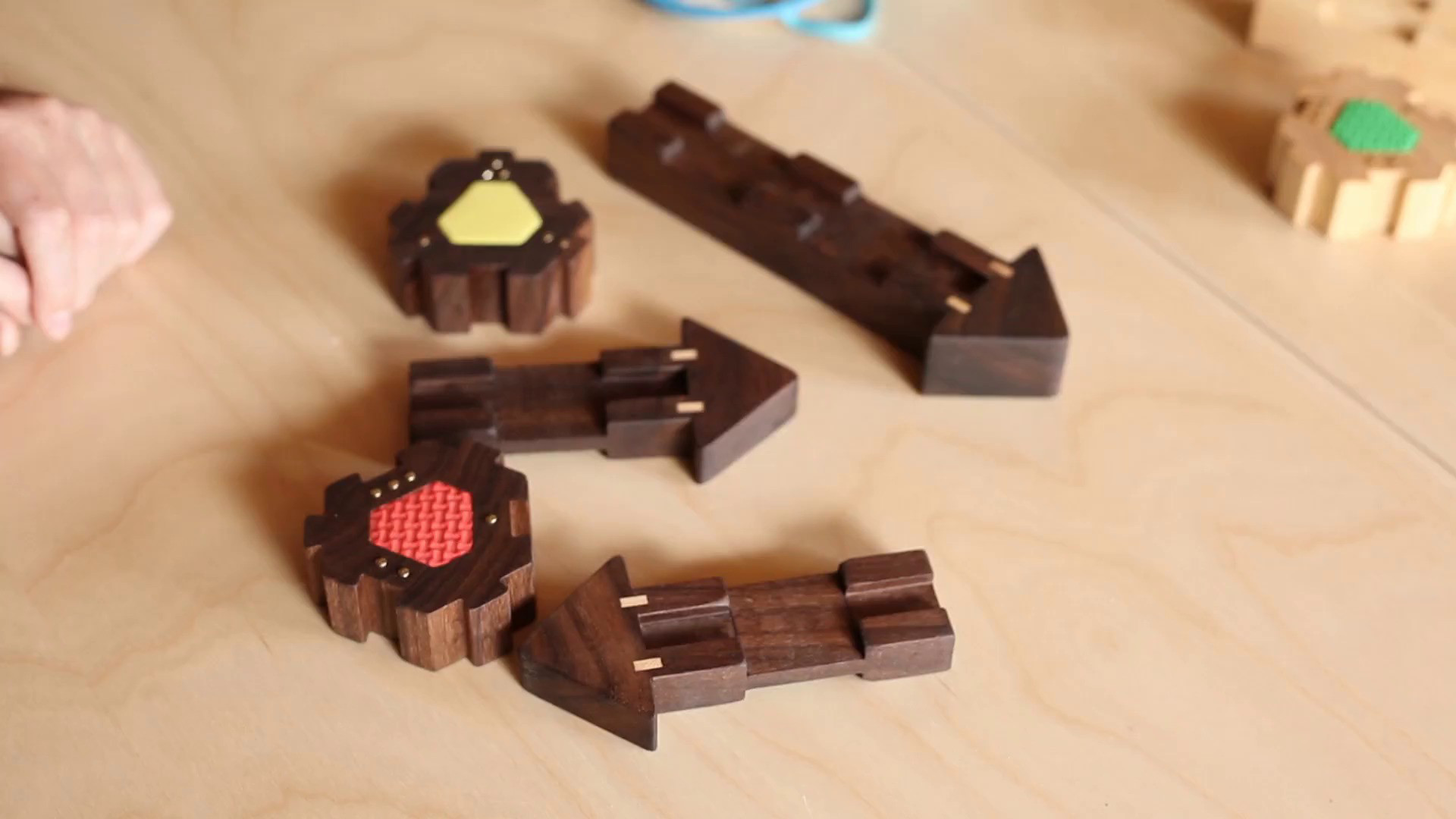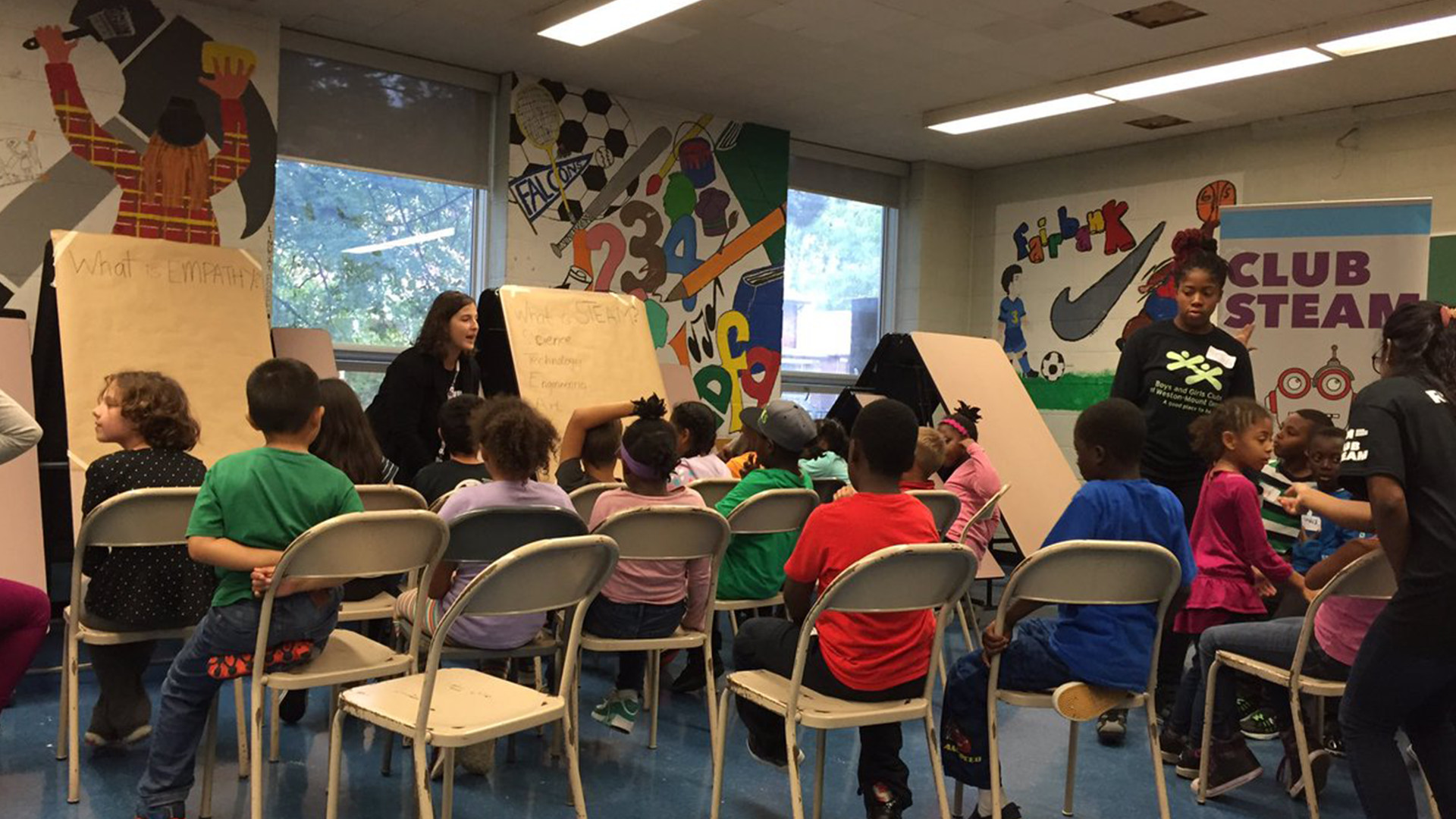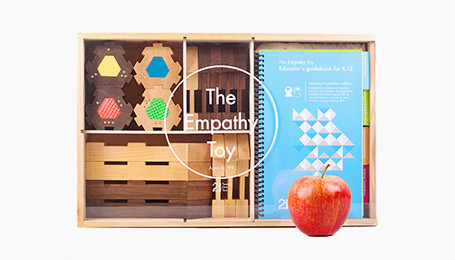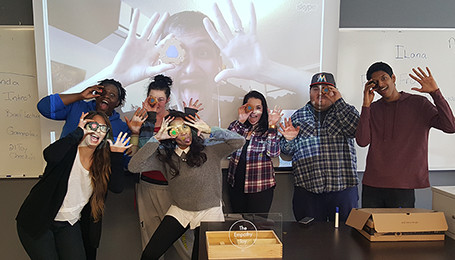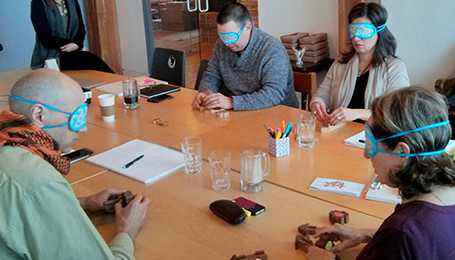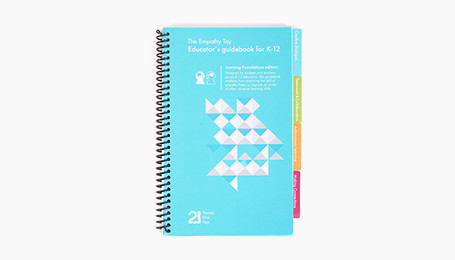In our exciting world of new technologies, we are shifting the way we engage with stories and information. A trip into the original ROM (Royal Ontario Museum) building, which opened its gargoyle-flanked doors more than a century ago, feels like a journey directly into the belly of an ornate and precious artifact. What’s housed in this building embodies some of the most remarkable moments of our global history, but unfortunately, an iPhone screen bursting with Angry Birds can seem more appealing to the younger generation than an idle, taxidermied Dodo Bird sitting in a museum display case. In this cultural climate, institutions like the ROM are faced with an exciting challenge – to present history and culture in a way that excites and empowers a younger generation to apply their knowledge of the past to navigate future challenges.
The ROM in particular has identified STEAM (Science, Technology, Engineering, Art & Math) and SEL (social & emotional learning) as the fundamental building blocks essential for connecting solutions of the past to questions of the 21st century. Their program, Club STEAM is a hands-on, interdisciplinary approach to invention and innovation.
We sat down with Cheryl Blackman, Assistant Vice President, Audience Development, and former Club STEAM Leader and classroom teacher, Jamea Zuberi, to discuss their program Club STEAM/ROM in My Backyard, an afterschool program that brings the museum experience into communities with underprivileged children who may not have the opportunity to visit the museum regularly. This program is unique in the way it integrates STEAM learning with social and emotional skills to give students an immersive learning experience that can be carried out of the program and applied to other parts of their lives.
Twenty One Toys:
A lot of people think a museum is a place of the past. Why is a museum an important space for preparing 21st century learners?
Jamea Zuberi – Classroom Teacher & Club STEAM Leader:
We’ve all been conditioned to think about museums using that framework, but I see the museum as a place of engagement where kids get the chance to think out of the box. It’s a dynamic, creative and innovative place that [allows kids to take a more] participatory role in their learning.
Twenty One Toys:
You are developing amazing programming to help young learners meet the challenges of the future. Why did you decide that STEAM was an important part of the ROM’s program offerings?
Cheryl Blackman – Assistant Vice President, Audience Development:
We always had STEAM in mind as a lens because we’re very interested in the idea of preparing 21st century students. It allows us to take a maker focus as opposed to the curriculum focus receive in school. STEAM is another way to engage kids in deep learning that’s not framed around curriculum.
Twenty One Toys:
Do you think this type of learning is important outside of school?
Jamea Zuberi – Classroom Teacher & Club STEAM Leader:
In school, you have prescribed instructions that may direct children’s creativity. Students are always given objectives and preferred outcomes. They are hardly ever allowed to freely think in the way they would like to and the rare times they are, there’s a time limit. One good thing about Club STEAM is that it enhances [the learning that’s happening in the classroom]. When the children go back to school, they’re able to make connections and integrate Science, Technology, Engineering, Art, and Math in ways they have never considered.
Twenty One Toys:
Many people view STEM/STEAM and SEL to be on opposite sides of the learning spectrum. Where do you see the connection between them?
Cheryl Blackman – Assistant Vice President, Audience Development:
The reality is that in careers related to STEAM, innovation requires collaboration. You can’t be an effective collaborator if you can’t figure out empathy. There is a very strong relationship between teambuilding, collaboration, design thinking and how we say we are supposed to be working together in the 21st century.
Jamea Zuberi – Classroom Teacher & Club STEAM Leader:
In the past, we’ve had scientists doing awful things in experiments with the knowledge and education that they have. I think that was a result of not having soft skills like empathy. These [different types of intelligence] have to work together. I tell my students all the time, if you are a scientist who is at the top of your game, [you have the responsibility] to use that knowledge to make a positive change. We use The Empathy Toy and soft skills to bridge that gap.
Twenty One Toys:
How is the Empathy Toy being used in Club STEAM?
Jamea Zuberi – Classroom Teacher & Club STEAM Leader:
What we’ve created is an Empathy Zone where we use the toy as a tool to inform thinking and actions of young people in the program. We start every session with 15-20 minutes of Empathy Toy game play. When we have a problem we can’t solve or we’re having difficulty figuring out where we’re going to go with the team, we use the whole concept of empathy. We always come back to the toy and playing the game as a frame of reference.
Twenty One Toys:
How have participants reacted to The Empathy Toy, and has anything surprised you?
Jamea Zuberi – Classroom Teacher & Club STEAM Leader:
The last session really brought it home for me. We gave the children options of activities, including working with the 3D printer, working with the computer, building art pieces, putting things together with their hands, and the Empathy Toy. I thought that not many of them would be interested in the Empathy Toy. But there was a large group [that gravitated to] it. We seem to think that our children are just interested in computer games, and that moment was proof that that’s not true. If we give them alternatives, they surprise us.
